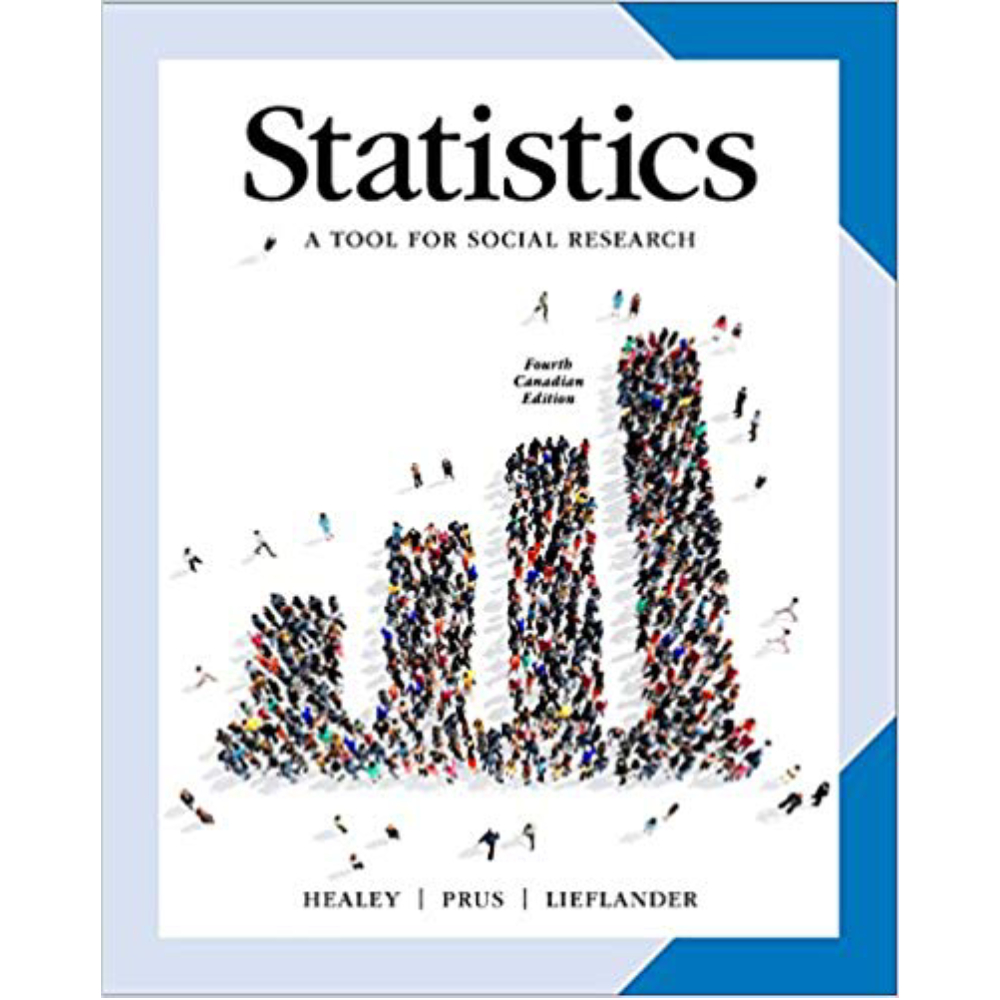Statistics A Tool For Social Researchers In Canada 4th Edition By Steven Prus – Test Bank
$55.00
Statistics A Tool For Social Researchers In Canada 4th Edition By Steven Prus – Test Bank
You will receive this product within 24 hours after placing the order
Statistics A Tool For Social Researchers In Canada 4th Edition By Steven Prus – Test Bank
1. What is the central problem in the case of a two-sample hypothesis test?
a. determining if the samples are random
b. determining if the parameters are representative of the populations
c. determining if two populations differ significantly on the trait in question
d. determining if the sample statistics are the same as those of the sampling distribution
ANSWER: c
2. An economist wishes to compare retirement savings of public sector workers to private sector workers. What type of hypothesis test should she employ?
a. a one-sample, one-tailed hypothesis test b. a one-sample, two-tailed hypothesis test
c. a contingency table analysis d. a two-sample hypothesis test
ANSWER: d
3. When testing for the significance of the difference between two samples, what is the proper assumption for step 1?
a. The samples are random only.
b. The samples are dependent and random.
c. The samples are independent only.
d. The samples are independent and random.
ANSWER: d
4. A sample is gathered from one country, and a second sample is gathered from another country. If the sampling conducted from country 1 had no bearing on the sampling conducted in country 2, what would we call this?
a. independent random sampling b. dependent random sampling
c. pooled hypothesis sampling d. alpha random sampling
ANSWER: a
5. Educational researchers wish to compare students from two school districts (Brownsville School District and Midlands School District) on their levels of scientific literacy. They provide all students with the same test and calculate average scores for each sample. What would be an appropriate null hypothesis?
a. The sample of Midlands students are no different from the sample of Brownsville students.
b. Mean levels of scientific literacy are equal across both school districts.
c. Mean levels of scientific literacy are equal across both samples.
d. The population variance for scientific literacy is equal across both school districts.
ANSWER: b
6. What is implied by the rejection of the null hypothesis in the two-sample case?
a. that samples are different on the trait of interest
b. that populations from which the samples are drawn are not different on the trait of interest
c. that populations from which the samples are drawn are different on the trait of interest
d. that samples are not different on the trait of interest
ANSWER: c
7. Which is an appropriate research hypothesis for a two-tailed test of significance between two groups?
a. b. ì ? ì
c. ì > 0 d. ì = ì
ANSWER: b
8. When conducting hypothesis tests for two sample means, why does the term 1 ? 2 in the numerator of the formula reduce to zero?
a. because the tests are conducted at very low alpha levels
b. because the samples are independent as well as random
c. because the null hypothesis is assumed to be true
d. because the standard deviations are calculated first
ANSWER: c
9. What pieces of information from two samples does the “pooled estimate” combine?
a. Z (obtained) scores for each sample
b. means of both sampling distributions
c. the difference in means between the two samples
d. sample standard deviations, divided by the size of each sample (n)
ANSWER: d
10. Why must we typically use the formula instead of using ó1 and ó2 when conducting a two-sample hypothesis test?
a. because the standard deviations from the relevant populations (ó1 and ó2) are seldom known
b. because ó1 and ó2 are based on the sampling distribution, which is biased
c. because ó1 and ó2 can be used only for nominal level variables
d. because ó1 and ó2 increase the risk of Type I error
ANSWER: a











Reviews
There are no reviews yet.